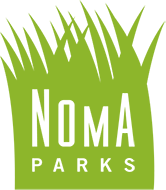
Washington Post: Shaping the City | D.C. bridges to be site of mixed-use projects
The goal of bridges is to span across rivers or valleys, streets or highways, rail yards or railroad tracks. Essentially a structurally supported deck, a bridge is a connector enabling movement between whatever the bridge connects. But a few bridges achieve another goal: If the bridging deck supports activities and structures, it is a destination as well as a connector.
With sufficient length and width, a bridge can become in effect built land, a place for residential, commercial and recreational development, a “reconstituted ground plane” in architectural parlance.
Unusually bucolic in comparison to other major cities, Washington has many neighborhoods that border parks or rivers. NoMa, the emerging mixed-use district whose name stands for “north of Massachusetts Avenue,” is a little different. The area’s principal tributary is the track bed that curves north from Union Station, carrying Amtrak, MARC and Metro trains.
Within NoMa are four streets that pass under the rail lines between First and Third streets NE: Florida Avenue and K, L and M streets. On the west side are mostly new residential and office buildings, including NPR’s headquarters; the east side is more residential, but is home to Gallaudet University and the rapidly redeveloping Union Market area.
Projectors could shine interactive art or sign language shapes on the walls of NoMa’s underpasses. Large sculptures made of LEDs could give visual interest to the ceilings and walls. Ten teams of architects envisioned ways (some dubious) to illuminate and enliven the tunnels where K, L, and M streets and Florida Avenue cross under the railroad tracks.
NoMa has a park problem. Initially designed as an office park with little thought given to pedestrian- and resident-friendly amenities like, say, grass, the neighborhood has seen a residential development boom and increased cachet from the growth of surrounding areas like Union Market and H Street NE. So it’s trying to make itself more livable, aided by $50 million in city funding to create parks there.
The NoMa Parks Foundation announced the semi-finalists who have been invited to continue on to the next phase of the NoMa Underpass Design Competition.
The competition’s jury is comprised of Elizabeth Broun, the Director of the Smithsonian American Art Museum; architect and columnist Roger Lewis; local artist Robin Rose; George Hemphill, local art curator/gallery owner and founding member of the District of Columbia Arts Center; and Charles “Sandy” Wilkes, Chair of the NoMa Parks Foundation, which is the sponsor of the competition.
NoMa Parks Foundation © 2025





